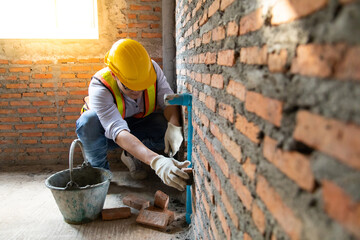A headlamp is a hands-free light source for outdoor recreation, work, or other tasks. There are many types of headlamps, but most use disposable or rechargeable batteries for power.
The three most significant differences between headlamps are brightness, lighting modes, and power source. These features do the most to determine how well a headlamp will work for you.
Whether you’re planning a long hike, running a race, or simply need hands-free lighting for work around the house, headlamps are an easy way to illuminate your path. They’re available in a wide range of brightness settings and features, so you can find one that suits your specific needs. But whether you’re shopping for a headlamp to use for outdoor adventures or something more practical, choosing a rechargeable model can save you money and reduce waste.
Rechargeable headlamps come with a USB charger and built-in Lithium-Ion battery, eliminating the need for disposable batteries. You can charge them at home or in the field with a portable power bank, solar panel, or car charger. Some models feature magnetic charging, a technology that eliminates the need for a USB port cover and cap while increasing water resistance and reducing potential failure points in the connector.
While rechargeable headlamps require a larger initial investment than non-rechargeable lights, they’ll likely pay for themselves over time with savings on the cost of replacing batteries. They also last longer with a more consistent energy output until they’re completely depleted, so you can use your headlamp for a wider variety of applications.
Many rechargeable headlamps can also be run on standard AAA alkaline batteries as a backup. This feature, called Dual Fuel, is perfect for backcountry excursions when you know you’ll be away from a charging port for a while. Coast’s FL75R headlamp, for example, comes with a cold-resistant lithium-ion battery but also includes the option to be powered by standard alkaline batteries as an emergency.
Compared to non-rechargeable headlamps, rechargeable models are lighter and more compact. They’re also more durable, as they’re designed to withstand a range of conditions and environments. They can be used in harsh, dusty conditions, and are resistant to corrosion. Additionally, some rechargeable headlamps are waterproof to allow you to take them on the water without worrying about damaging the bulb or internal components.
For the best results, always use a rechargeable headlamp with fresh batteries. This will help ensure your headlamp provides consistent illumination and maintains its high lumen output.
Brighter Light
Rechargeable headlamps use LED bulbs, which provide a brighter light than traditional lights. They also have a long lifespan and are more environmentally-friendly. They consume less power and emit fewer harmful chemicals than traditional light bulbs. These features help to make them safer for users and the environment.
Rechargeable headslamps also offer a wider range of lighting options than traditional flashlights. Most feature different beam settings to customize the illumination for various activities. Some have a spotlight setting for focusing on specific tasks and a floodlight setting for broad coverage of the surrounding area. Some headlamps also have a flashing mode that can be used to signal others to prevent injury or danger.
Some rechargeable headlamps include a battery indicator that alerts the user when the batteries are low. This can be an important feature if you’re planning to spend a long time outdoors without being near a power source. Many rechargeable headlamps also come with a USB charging port that allows you to use a portable power bank or other external charger to keep the battery charged.
The battery life of rechargeable headlamps is a significant factor when considering which model to purchase. It’s crucial to choose a model with a high lumen rating to ensure that the light will last as long as possible. Choosing a rechargeable headlamp with a lithium battery can also help extend the life of the device, as these batteries tend to be lighter and more durable than traditional alkaline batteries.
Another advantage of rechargeable headlamps is their ability to maintain a consistent level of brightness throughout their runtime. Traditional battery-powered headlamps may experience a gradual decrease in brightness as the batteries drain, but rechargeable models are designed to stay at their maximum output until the battery is nearly depleted.
Rechargeable headlamps are a great tool for anyone who wants to perform outdoor or indoor activities at night. They can be used for running, hiking, camping, and a variety of other activities. They’re also perfect for reading, cooking, and other hobbies in low-light conditions. The headlamps can be easily adjusted to the desired angle, and they can be plugged into a power bank or other external charger to ensure that they’re always fully charged.
Longer Battery Life
The long battery life of rechargeable headlamps is one of the biggest drawcards for many users. Not having to purchase a new set of batteries every time, means less money is spent and the hassle of disposing of wasteful disposables is avoided. Not only is this better for the environment, but it also saves space in a pack and ensures that you have a reliable light source at all times.
This is particularly important if you’re going on a long hike or run, as having an out-of-charge light can be extremely frustrating. It can also be dangerous, especially if you’re on an incline or trail where the light may not be visible to other people in your group. Using one of our top-rated rechargeable headlamps will ensure that you always have enough power to complete your journey.
The longer battery life of rechargeable headlamps is also a benefit for hikers, runners and other outdoors enthusiasts who are looking to save as much weight as possible. Adding extra battery packs or carrying multiple sets of disposables can add significant weight to your gear. This can cause discomfort and lead to fatigue on long trips. Using a rechargeable headlamp will allow you to avoid this and get the most out of your time on the trails or in the backcountry.
Having a reliable headlamp is vital for any outdoor enthusiast, but it can be even more crucial in professional environments like construction or emergency response. Using one of our longest-running rechargeable headlamps will enable you to work or play for longer periods of time and give you peace of mind knowing that your light won’t die out on you.
The Fenix HM70R headlamp is among the longest-running rechargeable headlamps on the market, with a remarkable 1600 lumens and an incredible 100 hour battery life when on low power mode. It’s also equipped with a hidden USBC port, intelligent memory and an LED indicator that lets you know how much charge is left in the battery. The large, glove-friendly switch allows you to easily change between eight different lighting modes, including spotlight, floodlight, reading light and SOS red strobe. The light can be worn with the included elastic headband or clipped to a hard hat, shirt pocket or backpack with its built in clip.
Environmentally Friendly
Many headlamps use rechargeable batteries, removing the need for costly and environmentally-damaging disposable batteries. Lithium-ion rechargeable batteries also hold their charge longer than other types of batteries, and they are more effective in cold temperatures, reducing the risk of battery leakage. They are more compact, too, giving you a better balance of power and weight than headlamps that require multiple sets of disposable batteries for adequate performance.
Rechargeable headlamps are also easier to clean, allowing you to keep your hands free while cleaning, navigating and changing settings. The convenience of using rechargeable batteries in a headlamp, rather than fumbling with loose change and a pack of replacement batteries, is a major benefit for users who are on the go, especially when working in rough environments.
The ability to select a different brightness mode on your headlamp is another advantage that rechargeable models offer over disposable batteries. Manufacturers now offer headlamps that can automatically adjust to the most appropriate brightness level based on ambient lighting, resulting in more optimal light output. This functionality is ideal for hikers, mountain bikers, hunters, campers and other outdoor enthusiasts.
Some manufacturers have even designed headlamps that emit green light, which is easier on the eyes than traditional white or yellow light and helps preserve night vision and the environment. This feature is useful for users who are concerned about light pollution or want to prevent attracting insects and other animals.
Headlamps that are rated IP68 or higher are dustproof and waterproof, making them a reliable choice for hiking, camping, fishing, hunting and other outdoor activities. If you’re planning to use your headlamp in harsh weather, be sure to check the manufacturer’s guidelines for proper care and maintenance. Accidental drops can damage internal components and the lens, so it’s a good idea to store your headlamp in a protective case or bag when not in use.
A rechargeable headlamp with a powerful lumen rating is an essential piece of equipment for any outdoor adventurer’s arsenal. Whether you’re a backpacker, climber, trail runner or tradesman, rechargeable headlamps are an efficient and convenient option for any activity.





